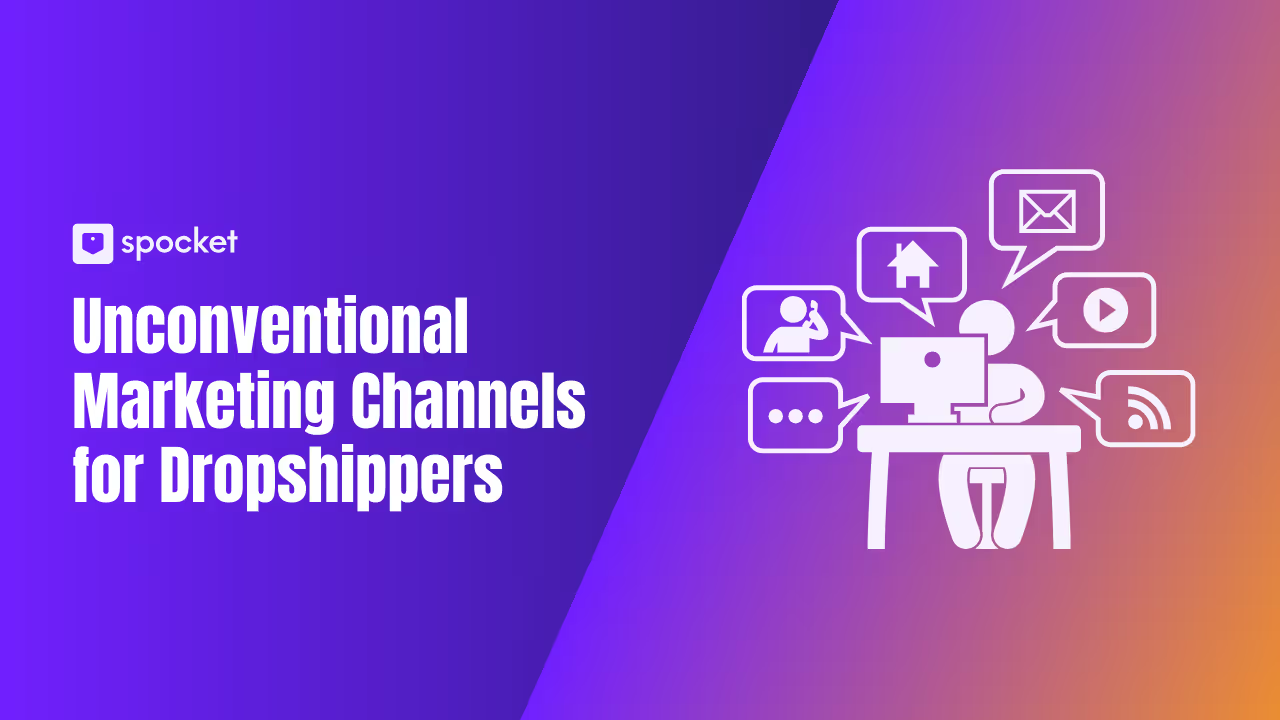Una sera ero immerso nel tunnel spaziale di Netflix alle 3 del mattino. Stavano arrivando i titoli di coda di Stranger Things. Ero pronto per «Next Episode».
In quel momento, ho pensato: «Netflix è un amico molto interessante».
Questo marchio, attraverso il suo marketing multicanale, ha creato una voce entusiasta di mostrarti la sua nuova passione e, singolarmente, attraverso il marchio e i contenuti, ha ottenuto enormi successi, senza bisogno di espedienti e offerte di cattivo gusto.
Con i loro consigli sui contenuti incredibilmente ottimizzati e la voce sui social media piena di meme e satira autoreferenziale, il marchio sembrava più una persona, con una personalità piena che un'azienda che cercava di vendermi un servizio.

E questo è stato il branding fatto bene.
PERCHÉ HAI BISOGNO DI UN MARCHIO:
Ma cosa dobbiamo assorbire noi proprietari di negozi di e-commerce da questo? La creazione di un marchio richiede più di un logo e uno slogan: un marchio è una miscela di diversi piccoli elementi, dal prodotto, alla pubblicità, al servizio clienti, al tono e alla voce, dal design al logo, dalla presenza sui social media, al valore aggiunto fornito.
Il tuo marchio è il rapporto che hai con il tuo pubblico: i loro sentimenti nei confronti del tuo marchio, le storie che circondano il tuo marchio e la tua posizione sul mercato.
Con 500 negozi che nascono ogni secondo, l'unica cosa che distingue i vincitori dalle masse è la forte identità del marchio. Se puoi darmi un solo esempio di azienda di successo che non ha costruito un marchio attorno ad essa con uno sforzo dedicato, rimarrò immensamente sorpreso. I negozi online prosperano grazie all'immagine del marchio, ossia al modo in cui le persone percepiscono il marchio e si connettono con esso, in quanto i clienti non sono in grado di toccare o sentire i prodotti da soli.
Certo, puoi sfruttare il tuo negozio interamente sugli acquisti d'impulso, ma se miri a lungo termine con un negozio che genera entrate costanti, lo sviluppo del marchio è un must.
COME SVILUPPARE UN MARCHIO ONLINE:
Identifica il tuo core:
Ponetevi le seguenti domande:
- Cosa rappresenta il tuo marchio?
- Cosa offri al tuo pubblico di riferimento?
- Qual è l'impatto maggiore che avrà la tua azienda?
Stimola lo scopo dell'esistenza del tuo marchio: in cosa ti differenzia dai tuoi concorrenti?
Cosa rappresenta il tuo marchio: Le pietre miliari di base per la tua strategia di costruzione del marchio. Gli aggettivi principali del tuo marchio determinano il tuo obiettivo: «biologico, fresco, vegano» seguono una strada molto diversa rispetto a «rustico, nostalgico, fatto in casa».
Ad esempio, non è un segreto per i visitatori che Everytable voglia rendere il cibo sano accessibile a tutti: questo deriva da un insieme concreto di parole attorno alle quali hanno costruito un'identità di marca.

Cosa offri al tuo pubblico di destinazione è il punto chiave del tuo marchio. Questo è il motivo per cui le persone fanno acquisti da te. Mostra ai tuoi visitatori lo stile di vita unico che il pubblico vede vivere attraverso il tuo prodotto.
Nessun cliente acquista solo un prodotto. Comprano uno stile di vita per se stessi.
Nike è un'illustrazione stellare di questa tecnica di branding.
La loro promessa al pubblico è Ispirazione e innovazione per ogni atleta del mondo, che non solo attira chiunque consideri il proprio sé ideale come atleta, ma fornisce anche un gancio abbastanza aderente a tutte le persone sopra menzionate.
Tuttavia, c'è un secondo problema nascosto in questo passaggio: mantenere questa promessa. Forse un paio di scarpe non sono una «ispirazione» sufficiente. Nike si assicura di creare contenuti che mantengano le promesse fatte al proprio pubblico: il che aumenta ulteriormente il modo in cui il pubblico vede Nike come marchio.
Se hai bisogno di un piccolo vantaggio nella strutturazione della visione del tuo marchio e hai bisogno di modelli per elaborare la tua immagine aziendale, ti consigliamo di dare un'occhiata a Pacchetto iniziale Shopify di Outlane: che include un kit di branding, un kit per i social media, alcune fantastiche illustrazioni e molto altro!
Puoi dire che ci piace?
Prossimo:
Qual è l'impatto maggiore che avrà la tua azienda è una domanda che va oltre i vantaggi monetari che otterrai dal tuo negozio. Date spazio alla visione d'insieme del vostro marchio: ad esempio, Starbucks ha una pagina chiamata «La nostra dichiarazione d'intenti» che riassume ciò che sperano di ottenere con il proprio marchio: fornire caffè di qualità, creare legami umani nelle caffetterie e consapevolezza ambientale.

Tutte le aziende straordinarie hanno opinioni: che si tratti di opinioni sul modo più semplice per prendere un taxi o sulla salvaguardia della fauna selvatica, il tuo marchio deve lottare per qualcosa che il tuo pubblico di destinazione possa accettare.
Know your target market:
Developing a brand identity is 50% knowing who your audience is. You need to deliver your message to an audience that is listening.
In an increasingly crowded market, you need a brand that is tailored to a specific audience. Here comes in the dreaded buyer persona- a fictional model of your ideal customer. You can view your current traffic and get details on the ones that convert, and then proceed to focus on audiences that are similar to your customer. Retailers usually look into the following variables:
- Age: What ages are interested in purchasing your product? (eg. fidget spinners might not be the right product for the ages 60-70)
- Gender: Which gender would my products most appeal to? (eg. traditionally, jewellery appeals to women more)
- Location: Where is your customer located, and which regions would not be interested in the product? (US patriotic gear might be of interest to US citizens only)

- Interests: What interests do your customers have? (Yoga pants might be the right product for people interested in sports, fitness, gymming, athletics, yoga, and so on)
- Job Position: What does your ideal customer do, professionally? (A stay-at-home mom might be less invested in a desk lamp than a manager who works late hours at office)
- Income Level: How much do your customers earn? (An insanely amazing skateboard might not be apt for a college student due to the cost)
- Buying Motivation: Why would your ideal customer want to buy your product? (A dog owner might want to buy an LED dog collar to keep her dog safe at night)
- Buying Concerns: What would prevent your customer from buying your product? (The dog owner might be worried about the durability of the collar, for instance)

Building a brand online would require thorough research of your target market: all established brands started off by selling their product to a smaller population, and then, gradually expanding to bigger, broader audiences.
Tell a Story:
Telling a story via your brand means using every single space available for you to speak to your audience in a creative, consistent manner. Build a strong brand identity by telling your story as the creator: how you built the store.
But that is not where story-telling ends. Right from your advertisements to your presence on social media platforms- consistent tone, voice and content will definitely increase brand awareness.
Magnolia Market, a home and lifestyle store, runs a blog with guides and fun articles to give value to potential customers- which helps the venture create a brand identity that is unique and connects the audience to the store-owner.

Building brand awareness through referral programs, having products reviewed by influencers or through ads on social media all are excellent brand development strategies. Be more than a store owner: your product or service should extend beyond the confines of a store, and spill into a community. Top ecommerce brands have been known to personalize the experience of a customer: using their name, sending custom emails and making the copy on the site speak to individuals.
Airbnb tells stories, not just through their About us page, but also through their Instagram feed:

Have a Knowledge Base:
Did you ever notice that all established brands have a well-written knowledge base to quickly answer customer questions. Having a self-help knowledge base with clearly documented help articles will enable you to establish yourself as a brand.
If you are a WooCommerce or WordPress user there is a Helpie WordPress Knowledge Base plugin which helps to create a customer self-help portal for your business. It gives you the best features for branding and styling. When your customers find the answers they are looking for, your authority as a brand will increase and so will be your sales.
The above steps will help you get started with building your personal brand on the internet: remember to add passion to your project! If you select a niche that you are inherently interested in, beyond monetary gains, you will find your brand simply an extension to your personality.
Building an online brand identity is a process that requires patience, and often takes years and months to fully develop: what you need to do is keep at it consistently, creating a rounded personality for your store that garners a dedicated loyal audience!
Stay tuned for step two of marketing and branding strategies for ecommerce, and let us know what you think are great tips to build a brand identity!







































